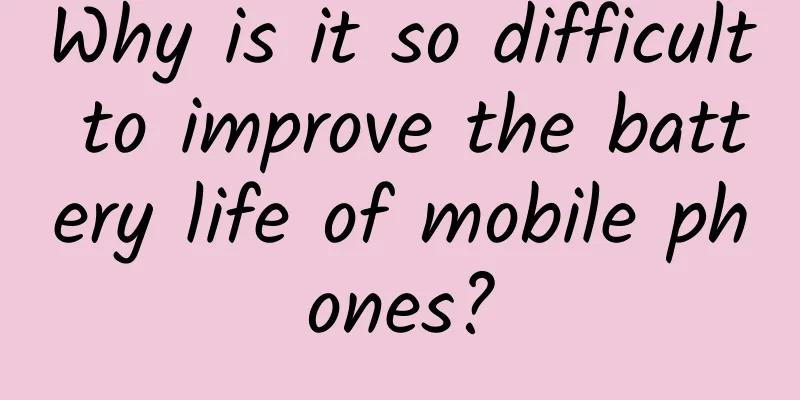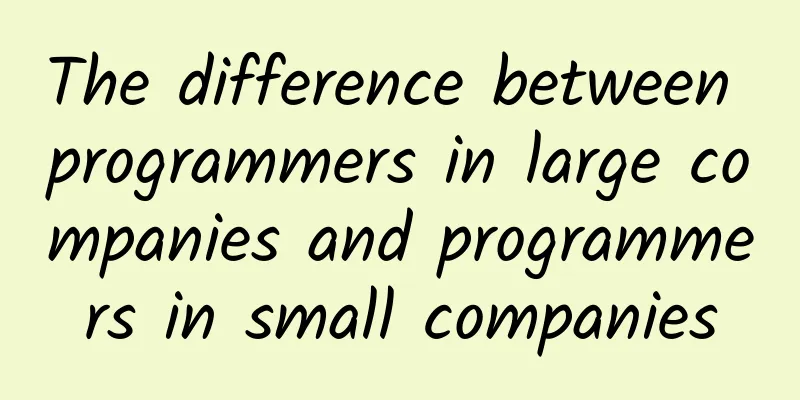Why is it so difficult to improve the battery life of mobile phones?

|
Smartphones are better than feature phones in the past, except that their batteries are too short-lived. Why, after so many years of development, has the battery life of mobile phones not been improved? Do we still need to charge them once or even twice a day? Indeed, after years of development, the battery life of smartphones has become a chronic problem in the industry. Industry insiders pointed out that the key to breaking through the bottleneck of battery life lies in the innovation of battery materials. The performance improvement of smartphones highlights the shortcomings of batteries. In the era of feature phones, it was normal to standby for more than ten days, and users could even use them for a week without charging. At present, the battery capacity of most smartphones is several times that of feature phones, but users need to charge them once or even twice a day. The reason is that the development path of smartphones tends to be more and more functions, stronger performance, and larger screens, which greatly increases the energy consumption of mobile phones. A survey on the shortcomings of iPhones by FixYa, a Japanese smartphone user service company, showed that the first one was short battery life, accounting for as high as 35%. It can be seen that the insufficient battery life of smartphones has become the biggest pain point in user experience. Lithium battery development approaches zero critical point The reason why the battery life of mobile phones cannot change qualitatively is that it can only rely on the development of lithium-ion batteries, and the improvement speed of lithium batteries is far behind the growth rate of demand for batteries in smartphones. At present, the innovation speed of lithium battery materials is very slow, and most of them are improved in manufacturing processes, resulting in the capacity of lithium batteries can only achieve an increase of about 10% per year. Even Elon Musk and Tesla, who are famous for breakthrough innovation, have only made breakthroughs in battery management, and have not made any progress in the materials and technology of the battery itself. They still use traditional Panasonic lithium batteries. In the field of mobile phones, it is even more special. The current trend is to design thin and light, which is contradictory to the increase in battery capacity. At present, the weight-to-capacity ratio of lithium battery materials is about 150mA/g. If there is no good industrial design, simply increasing the battery capacity will make the appearance of the mobile phone become terrifying. Therefore, many smartphone manufacturers can only give up large-volume batteries in order to meet the appearance requirements. Take the iPhone 5 released last year as an example. In order to maintain an ultra-light body, its built-in battery capacity only increased by 10 mAh compared with the previous generation. Compared with the improvement in its performance, this is obviously a drop in the bucket. The most common solution is to carry a mobile power bank: although the standby time of the mobile phone is not long, a 10000mAh mobile power bank can basically meet the charging needs during travel. The second method is for manufacturers to innovate the charging method, such as using wireless charging technology, Wi-Fi signal charging technology, etc., which can to a certain extent save users from the pain of carrying too many data cables. The third method can only rely on the efforts of mobile phone manufacturers and chip manufacturers such as Qualcomm to reduce the power consumption of core components such as processors and screens as much as possible, and continuously optimize the system and interface settings to extend the battery life of mobile phones. Of course, if you want to fundamentally solve the problem of insufficient battery life of mobile phones, and make mobile phones thin and light while also having a small and large battery, you can only hope for a breakthrough in battery materials. However, new batteries such as fuel cells and nuclear batteries are generally expensive, and coupled with factors such as immature technology and questionable safety assurance, it will take some time to truly achieve commercialization. Future challenges Although the improvement of battery technology is limited, the smartphone industry is still growing at a very high rate. The first is the launch and popularization of 4G. Compared with 2G and 3G, the power consumption of mobile phones using 4G networks will increase significantly, so that many users choose not to continue using 4G because the battery cannot bear it. 2014 will become a new era of rapid development of China's 4G industry. If the battery life cannot be improved as soon as possible, the speed of 4G popularization will face severe challenges. The second is the emergence of new smart hardware. In particular, the vast majority of wearable smart devices that are small in size and can be carried with you still use lithium batteries. On the one hand, under the premise that there is no breakthrough in lithium battery technology, the extension of battery life means the increase of battery volume; but on the other hand, due to the need to meet the property of being easy to "wear", the battery volume of these devices cannot be too large. How to let users no longer have to worry about charging problems when experiencing these emerging devices, and the mobile power supply that is necessary when going out has become a "bottleneck" that wearable smart devices need to break through. As a winner of Toutiao's Qingyun Plan and Baijiahao's Bai+ Plan, the 2019 Baidu Digital Author of the Year, the Baijiahao's Most Popular Author in the Technology Field, the 2019 Sogou Technology and Culture Author, and the 2021 Baijiahao Quarterly Influential Creator, he has won many awards, including the 2013 Sohu Best Industry Media Person, the 2015 China New Media Entrepreneurship Competition Beijing Third Place, the 2015 Guangmang Experience Award, the 2015 China New Media Entrepreneurship Competition Finals Third Place, and the 2018 Baidu Dynamic Annual Powerful Celebrity. |
<<: Apple ignores doubts and buys Beats: Don’t spoil my fun!
>>: Surface Pro 3 with Ubuntu: The result is pretty good
Recommend
The latest news on retirement salary adjustment in 2022: How much will it increase?
This year, the State Council issued the "14t...
Huang Renxun may visit Shanghai on June 6. Is there hope for large model companies in China?
Recently, there have been reports that Nvidia CEO...
Spring marketing, advanced branding strategies!
The annual "Spring Limited" marketing c...
Never try to fight a kangaroo!
Who is the most popular animal in the world? With...
Why are cells big and small? Top journal reveals the microscopic world of cells
Li ChuanfuHuang Ting In the vast field of biology...
Why does outdoor exercise help slow the progression of myopia?
Now we often hear that taking children to outdoor...
Thought it was a heart attack but couldn't find the cause? This torturous disease turns out to be around us!
Expert of this article: Zhao Wei, MD, associate c...
I strongly recommend that you eat this kind of pear by "sucking" it, it's amazing!
Autumn is a good time to eat pears. There are man...
How to do Taobao customer promotion now?
Friends who are familiar with online store operat...
Faraday Future says it has not yet raised $1 billion in "life-saving money"
On December 18, in response to media reports that...
Can machines save the human soul? Here comes an AI chatbot that can "talk" to you!
The significance of artificial intelligence (AI) ...
Fission Methodology: How to achieve precise fission and improve paid conversions?
Last week, I helped a friend implement a project....
Did the ginkgo tree, which has an unbalanced “male-female ratio”, also have a large population in the past?
Ginkgo seems to be a very common and ordinary pla...
[Case] 17 pictures to understand the functional development and analysis of Meituan.com’s campus channel structure!
17 pictures to understand the development and ana...
A 2-year-old child died after accidentally ingesting a diet pill containing sibutramine!
Recently, the news that a 2-year-old child died a...









